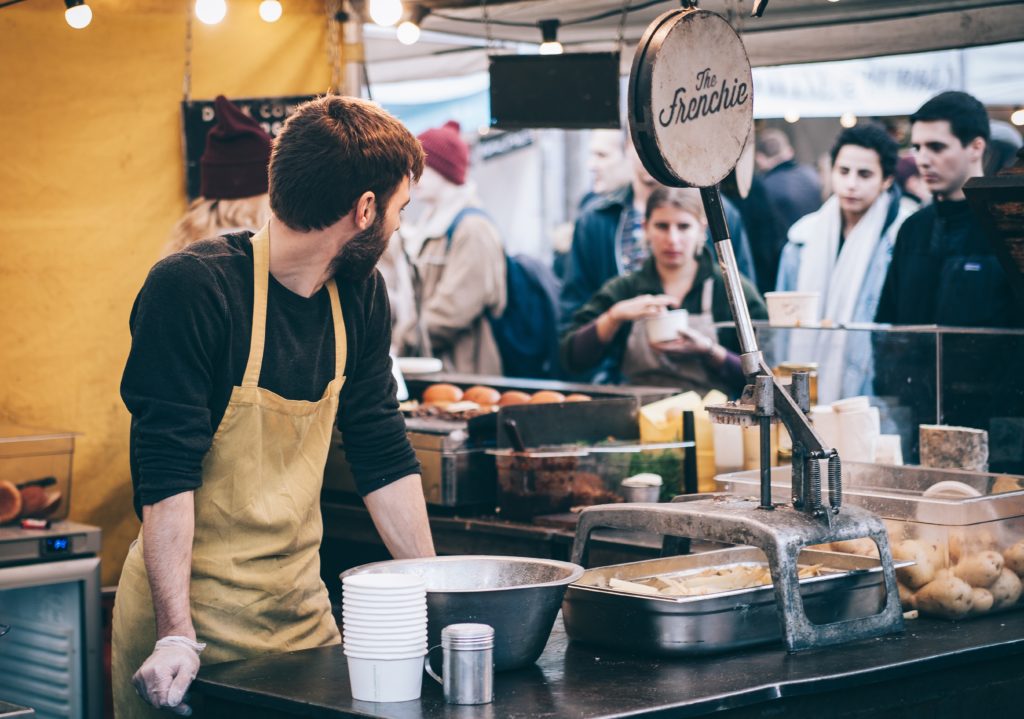By what means do you start a food truck business in Australia – How to get the wheels in motion and the appetites in gear.
You get what you put in!
The reward is the hard work you put in because this is your baby. Your fabulous food is the key ingredient, then the smiles and high-fives will follow.
You love to cook and friends and family eagerly await your offering and experimentation – which could only mean one thing! TAKE IT TO THE STREETS!!
Are you ready to take it on? You know you want to.
The upside first and foremost has to be you will be your own boss and with that comes responsibility, motivation, and lots of hard work.
Let us commence
Sure this culinary escapade doesn’t have the cost of running a restaurant and the attraction of lower overheads are enticing. Let’s not forget a business objective and how to manage your time is the deal maker.
But before we get too excited here are the things to evaluate:
- What is your budget and is funding available?
- Do you have any business experience?
- What is your time commitment? Is this to be a part-time or a full-time venture?
- What are the staffing options?
- Do you have the qualifications or experience in hospitality? Are they even necessary?
Test the water
The biggest influence has to be your budget as to how you will get the food to the people. Well before the food is thought about it comes down to what kind of mobility you can comfortably afford. You can start off small as a testing ground and work your way up. This can be a Food Cart, then a Marquee or popup Gazebo, next up a Van, perhaps a Trailer and ultimately the Food Truck.
Research your options. Visit events (check our Food truck Festivals directory and get in touch with organisers)
By doing so you’ll get a feel for what suits the cooking and selling of your offering. Ask the seasoned operators what they think. You might discover a marquee to be a better option. Of course the obvious consideration is the equipment too. It might just be a sandwich press, fryer and espresso machine, somehow I can’t see wood oven pizza being pushed around on a food cart. Regardless the equipment has to be of a commercial standard, the hospitality industry dictates that.
Food Safety Regulations in which we trust
The legal requirements keep any old person on the street from selling food on any old street. Strict legal rules and regulations are in place to see you might need some basic training in order that you conform with the appropriate food safety legislation. The Foods Standard Code will become your ‘go to’ reference guide and you will form an affiliation. Realistically there are certain sections that relate to your situation.
Expertise & tuition
Basic food training and food safety need to be completed by the owner and the staff before your delicious cuisine is introduced to the public. There are hospitality training providers in all states whether they be in-house or online. All Australian states differ in their training requirements, therefore well worth looking into. It is your responsibility as the owner, along with your staff, to be well-versed in food handling and safety. The food can be tasty but let’s not be hasty!
Insured safeguards
Whether you decide on a food cart or anything up to a food truck, insurance is necessary. When you book a space at an event the organisers will ask for a copy of your ‘Certificate of Currency’. Especially when the public is involved this is mandatory, but of course, you will insure your business too, there is a lot of time and money involved in your venture. The local councils might have laws and regulations in place for public liability, then of course the insurance companies will have a structure in place for your needs.
For the mobile food business, the type of cover would include – income and vehicle protection, public liability, and workers’ compensation.
Do we dread the legal implication? Of course, we do. The laws are in place for everyone’s protection. Gone are the days when Black Bart sold his meat pies out of a wheelbarrow in the 1800’s on a street corner. I feel we have progressed somewhat. Get the legal in place then take your fabulous offering to the masses.



